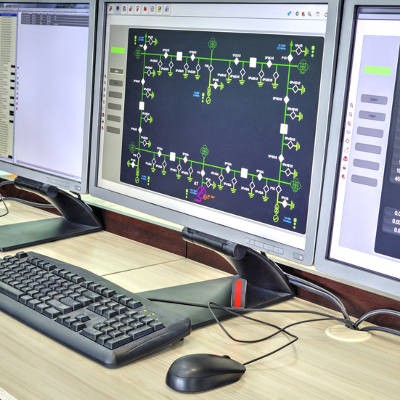Ferrum Technology Services Blog
 As the world record holder for the land’s largest machine, the Bagger 293, a German bucket-wheel excavator, is certainly a sight to behold. Standing at a jaw-dropping 310 feet tall, the colossal machine looms over the Statue of Liberty at twice its height, and sports a massive 722-foot length. What’s cooler than the world’s largest ground-wrecking machine? One with remote technology!
As the world record holder for the land’s largest machine, the Bagger 293, a German bucket-wheel excavator, is certainly a sight to behold. Standing at a jaw-dropping 310 feet tall, the colossal machine looms over the Statue of Liberty at twice its height, and sports a massive 722-foot length. What’s cooler than the world’s largest ground-wrecking machine? One with remote technology!
The same business technology that worked wonders over twenty years ago is much different from the current state of office technology. Businesses could get away without a complex network infrastructure, but that’s sadly no longer the case. With multiple servers and workstations to manage, the typical small business network has more maintenance on its hands than ever before. What’s the best way to approach this maintenance?
When you experience troubles with your technology, you don’t have time to just sit around and wait for the problem to resolve itself. You need someone by your side to assist with the problem. Yet, many small businesses don’t have the luxury of an in-house IT department that can help its employees resolve problems quickly and efficiently. How can you avoid this common issue and keep downtime to a minimum in the process?
Having mobile devices in the workplace can be tricky. While these devices greatly enhance flexibility, at the same time, mobile devices can leave your network unsecure if the proper precautions aren’t taken. To help you better manage the mobile devices connecting to your network, be sure to take advantage of these three mobile features.
Remote Wiping
One major drawback of mobile devices is how they can all too easily become lost or stolen. Obviously, if this were to happen to a device with sensitive company information stored on it, then you’d have good reason to panic. However, if the misplaced device was equipped with a cloud-based, remote wiping feature, you could then take action and wipe the device of its critical information before it’s too late.
Whitelisting and Blacklisting Applications
There are many malicious mobile apps out there that can deal great harm to your business. The risk can range from an app siphoning sensitive information to hackers, to having a device become compromised and enlisted in a mobile botnet. Security problems like these can be easily prevented if these apps are blocked from installing on the mobile device in the first place. This is achieved with a mobile device management solution that’s equipped to allow a network administrator the ability to whitelist and blacklist applications. As a bonus, this feature allows apps to be blocked on company devices that hinder productivity.
Actually, when it comes to mobile devices accessing corporate information, it’s a best practice to not allow users to download apps without first clearing the app with IT. When it comes to malicious apps, they’re designed to look like the real deal and have been known to fool even experienced users. Subsequently, when an IT professional oversees the installation of mobile apps, they’re able to adequately test the app for any security risks and then clear it for passage.
Cloud Syncing
For any business utilizing mobile devices, cloud syncing is the glue that holds every mobile strategy together. Without this feature, different versions of the same file would exist across multiple devices and manually syncing these files would be more work than what it’s worth. With cloud syncing, every edit to every version of every file is automatically saved and synced in the cloud. This allows your staff to collaborate in real-time using all of their various devices. Therefore, if you’re thinking about adopting mobile technology for your business, you’ll want to select cloud offerings that provide your business with the flexibility you need to succeed.
One of the primary concerns for organizations that have remote workers is the need to control and centralize communication solutions. While this isn’t a problem for a worker that’s in the office and hooked up to the company phone system, the remote worker doesn’t have this luxury. So, how can employees who work out of the office some or all of the time keep up with the rest of your workforce?
Thanks to modern office technology, traditional office barriers that held businesses back are being brought down. With the right technology solutions, workers can work at any time from any location. This has led many employers to consider hiring remote workers due to the ability to bypass the restraints of geographical locations. Yet, just because you can hire anyone for a remote position doesn’t mean that you should.
 Most people rely heavily on their smartphones. If you’ve been out in public recently, you know the behavior we’re talking about. Some people constantly have their noses in their phone. Many sources are beginning to see this as a major cultural problem, but is this because there has been no dedicated strategy to move smartphone users from constant entertainment and current events consumption? Ironically, to move society forward using these “essential” information delivery systems, we may just need more technology, not less.
Most people rely heavily on their smartphones. If you’ve been out in public recently, you know the behavior we’re talking about. Some people constantly have their noses in their phone. Many sources are beginning to see this as a major cultural problem, but is this because there has been no dedicated strategy to move smartphone users from constant entertainment and current events consumption? Ironically, to move society forward using these “essential” information delivery systems, we may just need more technology, not less.
 If you asked any of your employees whether they would prefer to work at home or in the office, we think it’s a safe bet that they would answer “at home.” Working remotely has several well-known benefits, including less commuting expenses, spare office space, and increased employee satisfaction. Despite these advantages, many employers are hesitant to let their staff work from home. Why is this the case?
If you asked any of your employees whether they would prefer to work at home or in the office, we think it’s a safe bet that they would answer “at home.” Working remotely has several well-known benefits, including less commuting expenses, spare office space, and increased employee satisfaction. Despite these advantages, many employers are hesitant to let their staff work from home. Why is this the case?
 Multitasking is something that everyone prides themselves on, but cognitive psychologist Art Markman seems to think otherwise. He says, "you are your own worst judge of how good a multitasker you are," due to the same areas of the brain that monitor performance are the same areas that work with multitasking, making it nigh impossible to determine how well you are actually multitasking. Of course, multitasking is something that every good employee should learn how to do, as it can improve productivity significantly.
Multitasking is something that everyone prides themselves on, but cognitive psychologist Art Markman seems to think otherwise. He says, "you are your own worst judge of how good a multitasker you are," due to the same areas of the brain that monitor performance are the same areas that work with multitasking, making it nigh impossible to determine how well you are actually multitasking. Of course, multitasking is something that every good employee should learn how to do, as it can improve productivity significantly.
 Today's business world is more environmentally conscious than ever before. An organization that goes green will help the Earth, improve their reputation, gain tax credits, and even attract new environmentally-conscious customers. When your business is making changes to go green, one of the easiest places to start is with your technology.
Today's business world is more environmentally conscious than ever before. An organization that goes green will help the Earth, improve their reputation, gain tax credits, and even attract new environmentally-conscious customers. When your business is making changes to go green, one of the easiest places to start is with your technology.
 It's no secret that employees love working from home. In fact, in a recent survey, 25% of employees admitted that they would accept a reduction in salary for the opportunity to work from home. This statistic may sound odd, but it makes perfect sense when you understand how much money working from home saves both employees and employers alike.
It's no secret that employees love working from home. In fact, in a recent survey, 25% of employees admitted that they would accept a reduction in salary for the opportunity to work from home. This statistic may sound odd, but it makes perfect sense when you understand how much money working from home saves both employees and employers alike.






